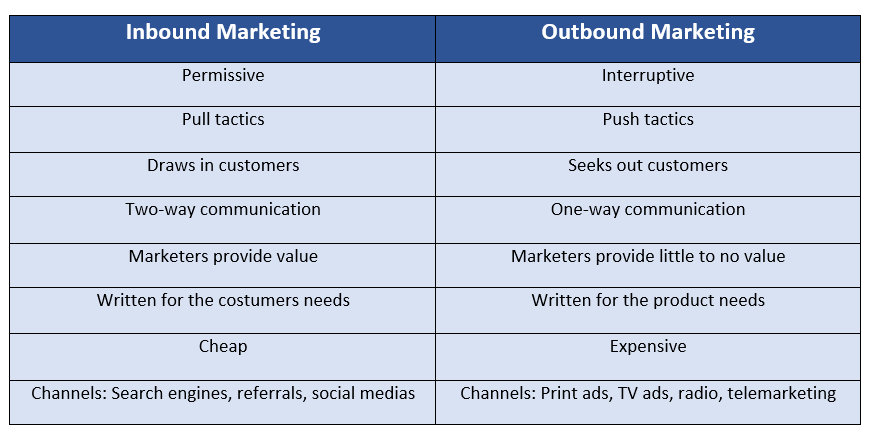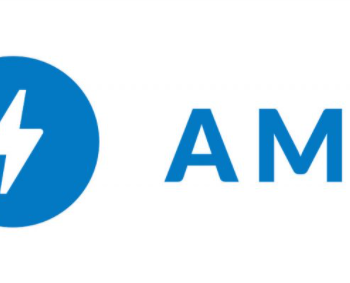When I talk to a lot of marketers about how they generate leads and fill the top spot in their sales funnel, a lot of people say outbound marketing.
However, many innovative and successful businesses are actually adopting the art of inbound marketing.
So, what is the difference between inbound and outbound? This post will guide you along with the advantages and disadvantages of each strategy.
Table of Contents
Well Moving Ahead,
Have you ever been tasked with designing or updating your company’s marketing strategy? Engaging with information and advice is easy – do you focus on creating splash signals, talking to potential leads at an industry event, or developing a digital strategy specifically?

Fortunately, there are two universal marketing concepts that can help you reduce your scope: inbound and outbound marketing. These are the two most common comprehensive marketing strategies, and each of them has different applications, benefits, and challenges. In this article, we will explore an overview of inbound and outbound marketing, providing examples of how each strategy should be implemented and the pros and cons of each method.
Inbound v/s Outbound Marketing – The Main Point Of Difference
Let’s have a look into the main point of difference between inbound and outbound marketing:


In order to have a better understanding, we have to understand both the terms separately
Starting with,
Inbound Marketing
Inbound marketing focuses on attracting customers to your products and services. Your Best Opportunities Searching for Products Online – 64% of consumers start their shopping journey online. They start by searching for products, services, or materials that meet the need or solve the problem. Therefore, your content should describe how your products or services will solve their problems, answer key questions in their niche industry, or meet their needs.
There are many ways to do this, including blogs, video content, guidebooks, and more. Each of these content pieces can also serve as a way to differentiate your product from the competition. Include product comparisons, excellent testimonials, competitive pricing, and excellent reviews in your podcast, social media post, or report. Remember that potential customers will receive thoughtful content at different points in their shopping journey, which will vary in content, but be consistent in the message.
Suppose a customer is looking for new marketing software. First, they can type “best marketing tool” into a search engine to find an illustration. The first organic result is a blog that clearly and objectively describes the top 10 marketing platforms. After reading the blog post, they want to know more about digital marketing.
Conveniently, there is a link at the end of the blog to encourage them to sign up for the upcoming webinar to learn more about the new digital marketing strategy. They click on the link and enter their name and email address to access the content. The site stores their contact information and keeps track of whether they have visited webinars.
Once they participate in the webinar, they may wonder if the company has successfully implemented the strategy discussed. At the right signal, the seller sends them a follow-up email containing a case study showing how one of their competitors used digital marketing effectively to achieve a huge ROI. It asks them to request a demo with a sales representative. Those who are already interested (and aware) of what the software does will go into sales calls, which will give you an easy sale.
Benefits of Inbound Marketing

1. There are several benefits to inbound marketing, which can help you determine if it is the right strategy for your company:
2. Inbound Marketing Non-Invasive – Opportunities to read your blog posts or attend webinars in their own time.
3. Inbound marketing material is educational – it is designed specifically for each stage of the sales funnel.
4. Inbound marketing is quantitative – you can tie every part of your strategy with a metric that tracks over time.
5. Your website and content are constantly updated, so inbound marketing will continue to generate qualified leads over time.
Inbound marketing challenges
1. Of course, inbound marketing is not for every company. There are some drawbacks to focusing on digital content:
2. Inbound marketing requires constant management, ensuring that content always speaks to the evolving desires and needs of consumers.
3. Inbound marketers spend a lot of time and effort developing and testing different content that will entice customers to change.
4. Inbound marketing requires a comprehensive strategy, which means you need to purchase tools that will help you implement integrated, cross-channel campaigns.
Now moving towards,
Outbound Marketing
Outbound marketing sends a message to a large number of people hoping to sell. This strategy is based on the idea that the larger the group, the greater the return. Outbound marketing is often associated with traditional marketing such as direct mail, events, billboards, cold calling, newspapers, and radio. However, outbound marketing can also be applied to more advanced technologies, such as pay-per-click advertising and spam email.
Often, consumers do not even know about the product or are looking for a product to be promoted. Opportunities can be interrupted by watching TV or watching a website and an ad explaining why they are buying a particular product.
For example, suppose a customer is driving on a highway and sees a billboard for a furniture store in the area. They may briefly want to really invest in a new sofa, but they keep that in mind. A few weeks later, when they see the local news, they see an ad for the same furniture store. Want to buy a sofa again but forget about it when the news comes.
After three months, they will check their mailbox and find a discount coupon for the furniture store. When this happens, they just get a bonus at work. Eventually, they decided to go ahead and buy that new sofa. The sofa is not mentioned in any ad and they do not need to order to buy the sofa right away. However, advertisements kept appearing in her daily life, so she shifted her focus from need to focus.
Benefits of Outbound Marketing

1. Some of the benefits of outbound marketing that should not be overlooked are:
2. Outbound marketing promotes brand awareness and helps you reach people who have never heard of your products or services before.
3. Outbound marketing leads to immediate results – people who are interested in your products and services are more likely to take action on your ads and buy.
4. Consumers are accustomed to outbound marketing – they know that there will be ads in the Sunday paper or on TV and may rely heavily on advertising that offers them new technology.
Outbound marketing challenges
1. Outbound marketing is hard to fix. Here are some of the risks involved in moving outbound marketing:
2. It is difficult to make outbound marketing attractive and relevant to everyone, so outbound marketing has become more generalized.
3. Customers can easily tune in to outbound marketing – many people mute the TV during commercials or immediately throw away or recycle their junk mail.
4. Measuring the effectiveness of some outbound marketing strategies, such as billboards, can be challenging.
5. Outbound marketing can be expensive, such as going to trade shows, paying for banner ads, and buying billboard space.
Overall, outbound marketing is about sending a message on a large scale, while inbound marketing has a very objective approach. Chances are that at least a few people will switch from your outbound marketing efforts, but this is often associated with high acquisition costs.
Instead of shouting your product name from the roofs and expecting a response from some people, inbound marketing materials can be fine-tuned to attract opportunities that suit you best.
The Bottom Line
Ultimately, the best marketing strategy for your business is that work. Always try new things while doing the old things you are working on. Analyze your data frequently and observe any changes you see. Remember, the audience also changes. What worked last year may not work this year.
People get tired of seeing the same thing and marketers can use certain methods, robbing them of their use. Your inbound and outbound marketing mix changes almost over time and technology adds new features and ways to connect with people. The most important strategy is always: experiment, measure, repeat.
Hope! You find this content informational. Don’t forget to share and leave comments. Thank you





